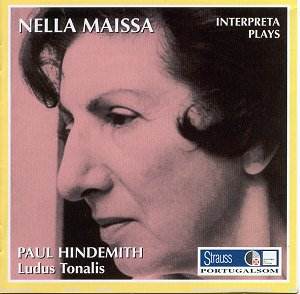
In order to encourage the necessary ‘relaxation’ of the wrist and hand between the chords, whilst creating firmer fingers, I continually observe and correct my student’s movements this is a most important part of the learning process, and I strongly recommend studying with a good teacher for this purpose. There are two challenges here the first is to keep the hand relaxed during engagement with the keys, which takes a lot of focused concentration, and the second, is to ‘observe’ the fingers as they depress the keys, ensuring use of the tips of the fingers, and that the joints of these fingers are ‘active’, that is, not collapsing. 1 as an example we worked on the top two notes of the chord, like this: We began by breaking the chords down, using just the second chord in the first bar from Ex. Whilst keeping the hand relaxed, the following exercises certainly helped my student realign her hand, and move from chord to chord with relative ease.
#Ludas tonalis free
Hand flexibility, or keeping the area between the fingers and wrist, relaxed and free from tension, will be crucial in the development and utilization of the fourth and fifth finger, and especially in relation to chords. I’ve written about hand flexibility on copious occasions on this blog, but this article might be of interest to some.

However, using the fourth finger in this manner can be a difficult experience for those who have issues with chords, or more specifically, with stretching-out their hand whilst keeping it relaxed. Employing the fourth finger for such chords generally keeps the hand in an ‘aligned’ position. The use of the fourth finger here is important, as using the third finger (to replace the fourth) in this situation can, in my opinion, destabilise the hand, forcing it to twist and turn uncomfortably. For clarity, I have added suggested fingering above the chords in Ex. Therefore, we worked in isolation, using several practice concepts. On first glance, it looks quite straight-forward, but my student, who has relatively small hands, struggled to play these right-hand chords without feeling tense and tight. This passage consists of chords in the right hand. The area which she found ‘tricky’ was from bar 7 – 11 of the final Lento section. This delightfully contemplative piece presents a few technical challenges, not least the opening introduction, which must sound improvisatory, and the subsequent Moderato passage (from bar 4), with its copious demisemiquaver figurations. A student recently studied the Praeludium from Ludas Tonalis by Hindemith. Roberts plays this music closer to Brahms or Schubert, especially the sonatas, than others do he balances the frequent counterpoint aspects of the music with the melodic sections.Today’s ‘Tricky Corner’ examines those pesky fourth and fifth fingers in chords. I would recommend this set to anyone wanting a fine interpretation of these works personally I prefer these version over those of Glenn Gould. Roberts approaches these in an unaffected but expressive manner. This is an excellent recording of these works, and unlike the Beethoven recording, the sound and recording quality is consistently excellent. Having heard Bernard Roberts’ complete Beethoven sonatas and his Bach WTC, I was interested to see how he approaches Hindemith. The third is probably most well-known it recalls late Beethoven and some Brahms while staying in the melodic and harmonic vocabulary Hindemith developed in the 1930s. The three piano sonatas are more varied the first is a five-movement work that tends to wander towards the end the second, on a smaller scale, is almost a sonatina, and the third is a four-movement work ending with a difficult double fugue. The fugues and interludes work (fairly) well when played as a set I’m not sure how well a smaller group would program. Ludus Tonalis is in some ways an homage to Bach’s Well-Tempered Clavier, recast as as twentieth-century work and an attempt to illustrate his thoughts on key relationships and harmony. Hindemith’s piano music is accessible and challenging both technically and musically.


Roberts_strong_hindemith_music_for_one_and_two_pianos02.rar – 250.8 MB Roberts_strong_hindemith_music_for_one_and_two_pianos01.rar – 267.5 MB Sonata For Two Pianos: Recitativ Eines Altenglischen Gedichtesģ0. Sonata For Two Pianos: Glockenspiel: MaestosoĢ9. Sonata For Piano, Four Hands: Ruhig Bewegt – Sehr LebhaftĢ6. Sonata For Piano, Four Hands: Mäßig Bewegtġ5. 1: Ruhig Beegte Viertel, Wie Im Ersten TeilĠ5. 1: Im Zeitmaß Eines Sehr Langsamen MarschesĠ4. # Ludus tonalis, cycle of 25 pieces for pianoĠ2. # Piano Sonata No.1 in A major (“Der Main”) Hindemith: Music for One and Two Pianos (2 CD, FLAC)


 0 kommentar(er)
0 kommentar(er)
